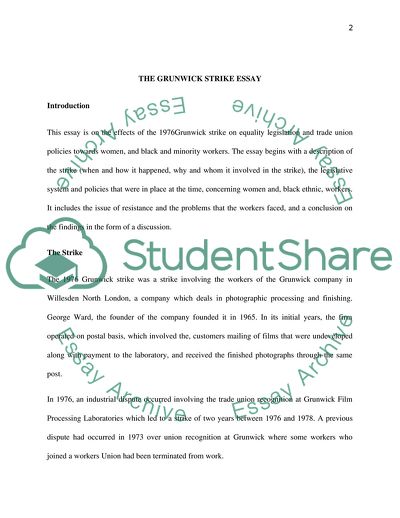Cite this document
(The Effects of 1976 Grunwick Strike on Equality Legislation, and Trade Coursework, n.d.)
The Effects of 1976 Grunwick Strike on Equality Legislation, and Trade Coursework. https://studentshare.org/human-resources/1788340-critically-evaluate-the-effect-that-the1976-grunwick-strike-had-on-equality-legislation-and-trade-union-policies-towards-women-and-black-and-minority-ethnic-bme-workers
The Effects of 1976 Grunwick Strike on Equality Legislation, and Trade Coursework. https://studentshare.org/human-resources/1788340-critically-evaluate-the-effect-that-the1976-grunwick-strike-had-on-equality-legislation-and-trade-union-policies-towards-women-and-black-and-minority-ethnic-bme-workers
(The Effects of 1976 Grunwick Strike on Equality Legislation, and Trade Coursework)
The Effects of 1976 Grunwick Strike on Equality Legislation, and Trade Coursework. https://studentshare.org/human-resources/1788340-critically-evaluate-the-effect-that-the1976-grunwick-strike-had-on-equality-legislation-and-trade-union-policies-towards-women-and-black-and-minority-ethnic-bme-workers.
The Effects of 1976 Grunwick Strike on Equality Legislation, and Trade Coursework. https://studentshare.org/human-resources/1788340-critically-evaluate-the-effect-that-the1976-grunwick-strike-had-on-equality-legislation-and-trade-union-policies-towards-women-and-black-and-minority-ethnic-bme-workers.
“The Effects of 1976 Grunwick Strike on Equality Legislation, and Trade Coursework”. https://studentshare.org/human-resources/1788340-critically-evaluate-the-effect-that-the1976-grunwick-strike-had-on-equality-legislation-and-trade-union-policies-towards-women-and-black-and-minority-ethnic-bme-workers.


